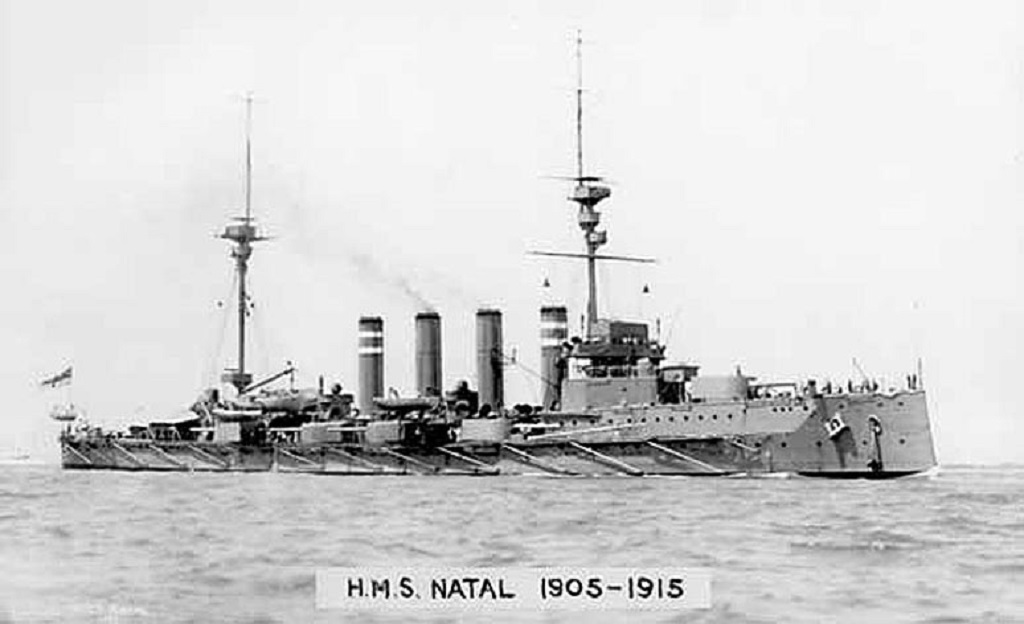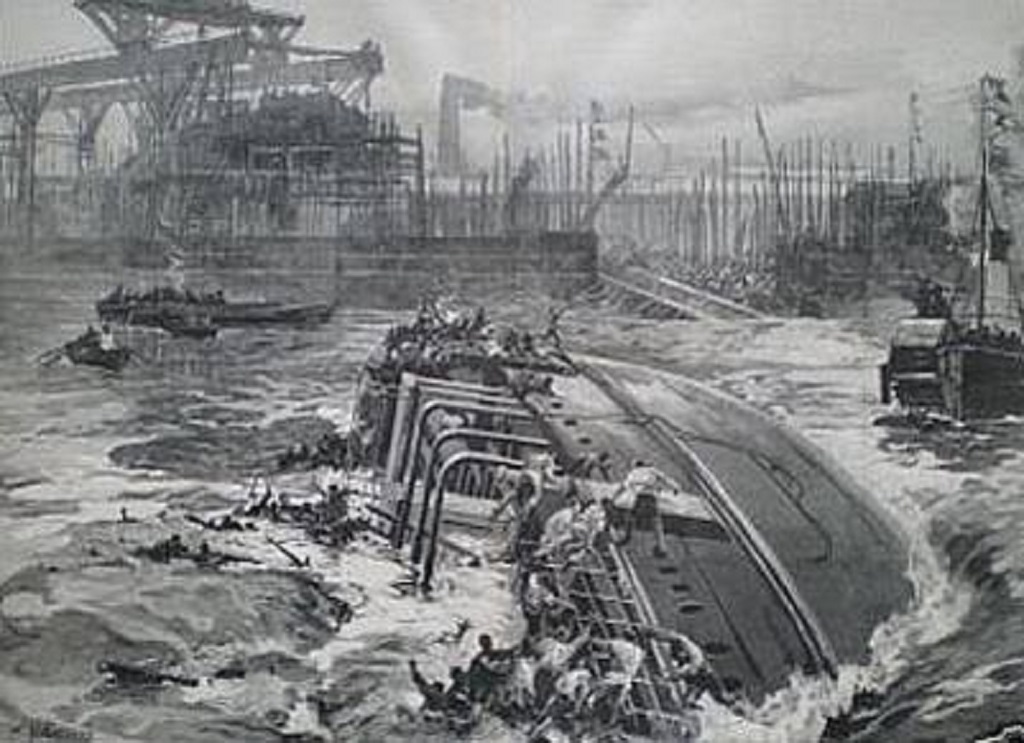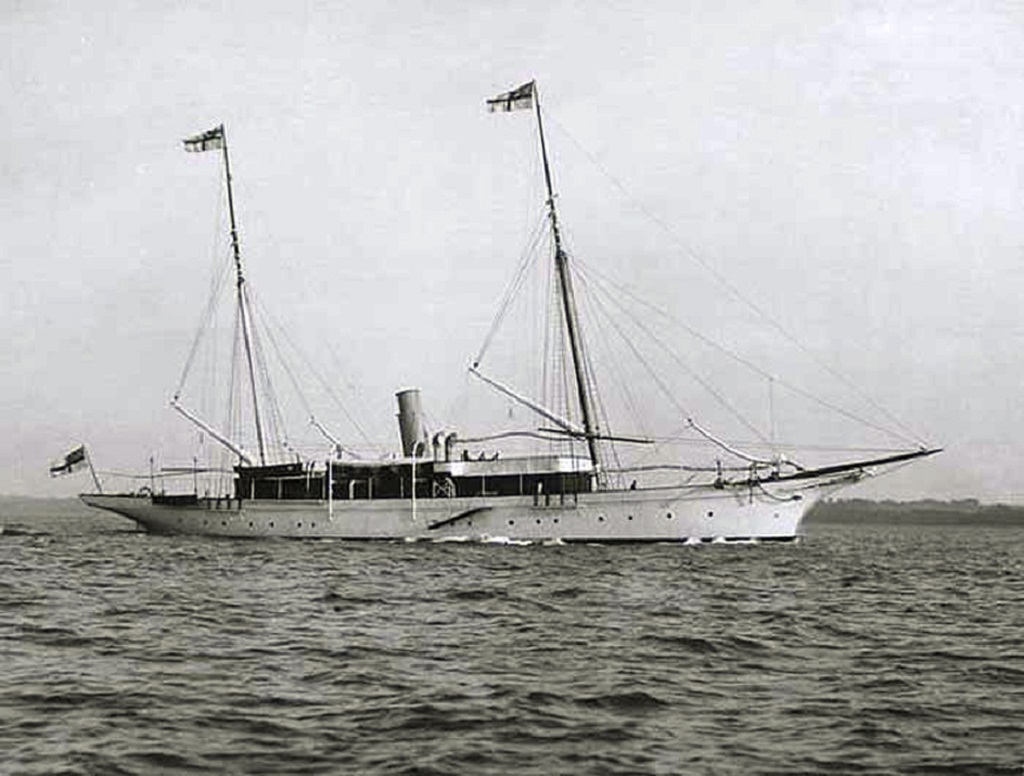This year marks the 100th anniversary of the sinking of the Iolaire.
But sadly, it’s not the only maritime disaster to have affected Scotland over the years.
War, storms, human error and the sheer destructive power of the ocean have all contributed to a number of tragic losses in Scotland’s waters
Here we list 10 other disasters.
1. HMS Natal

HMS Natal
In 1911-12 the warrior-class armoured cruiser HMS Natal escorted the royal yacht for the newly-crowned King George V’s trip to India. During WWI it was assigned to the 2nd Cruiser Squadron of the Grand Fleet. On 30 December 1915 in the Cromarty Firth, a series of internal explosions ripped through the rear part of the ship, capsizing it within fi ve minutes. All of the 390 listed crew perished in the tragedy, a figure that does not include a number of civilians – including women and children – who were on board at the time.
2. River Dee Ferry Boat Disaster
On 5 April 1876, a heavily overloaded ferry taking passengers across the Dee from Aberdeen to a holiday fair in Torry, capsized, killing thirty-two of the 70 or so people on board. The ferry operated a pulley system, so there was no need for an engine, or sails. The river was particularly high at the time and the fast-flowing water, coupled with the excessive passenger load, caused the ropes to be cast off and the boat to drift out to sea, before eventually sinking.
3. RMS Oceanic
Built for the White Star Line, until 1901 the Oceanic was the largest ship in the world. Like many merchant vessels, it was utilised during WWI, patrolling the waters from the north Scottish mainland to the Faroes. However, as it navigated its way around the island of Foula on its way north, it hit the notorious reef, the Shaalds of Foula, and was wrecked. Fortunately all of the crew were rescued. It was the first Allied passenger ship to be lost in the war.
4. The Orion
On 17 June 1850 the paddle steamer Orion left Liverpool for Glasgow with about 110 passengers on board. The following morning, whilst attempting to navigate close to the coastline in a thick mist, the boat struck a rock in the entrance to Portpatrick Harbour, Wigtownshire. It sank within minutes, killing 60 passengers – many of whom were still sleeping in their bunks. The captain and 2nd mate were charged with ‘culpable bereavement of the lives of the
passengers’; the former was imprisoned for 18 months; the latter was transported for seven years. One of the passengers killed in the tragedy was the eminent surgeon John Burns.
5. SS Daphne

SS Daphne
On 3 July 1883 the passenger cargo vessel SS Daphne sank moments after it was launched from the shipyard in Govan. At the time there were around 200 workmen on board ready to begin fitting SS Daphne out as soon as
she was afloat. As it moved into the Clyde, its anchors failed to stop its progress, and the current flipped it over. Around 70 lives were saved but 124 lives were lost, many of them young boys, some of whose relatives will have been watching from the shore.
6. The Swan
The Swan was originally part of the Royalist fleet during the English Civil War, before its disgruntled crew were persuaded to join Oliver Cromwell’s Parliamentarians. It was part of the fleet of six which attacked Duart Castle, Mull, in September 1653. the same month a violent storm sank the Swan, and two other ships, in the Sound of Mull. The wreck was discovered in 1979, since when a number of important artifacts have been recovered, including a rare type of cannon and a pocket watch.
7. HMS Saucy
Tug boats were a crucial part of the war effort in both WWI and WWII. Working on the tugs was notoriously dangerous, out in all weathers and under enemy fire in conditions the vessels were not designed for. Twenty tugs were lost during the Second World War, including HMS Saucy, an armed deep-sea rescue tug which was sank on 4 September 1940 after hitting a mine in the Firth of Forth, with the loss of 28 crew.
8. HMS Verona

The Verona
This former luxury steam yacht was requisitioned by the Royal Navy during WW1, fitted with guns and took up anti-submarine patrol duties from its base in the Moray Firth. On 24 February 1917, the vessel was struck by a mine from a German submarine off the coast at Portmahomack and sank in under a minute, taking all 23 crew with her.
9. HMS Dasher
This Royal Navy aircraft carrier was one of the shortest lived escort carriers in British maritime history. A converted merchant vessel, it was commissioned into service in July 1942. Eight months later, in the Firth of Clyde, a massive internal explosion caused it to sink, killing 379 of its 528 crewmen – many of whom escaped the ship but died of hypothermia or burns from escaped fuel that ignited on the water.
10. El Gran Grifon
This 650-ton 38-gun vessel was the flagship of the Spanish Armada that threatened to invade Britain in 1588. After being attacked and damaged in the English Channel, the ship managed to escape into the North Sea. However, a number of storms threw it off course, and as it attempted to anchor at the Fair Isle near Shetland, strong tides drove it into the rocks of Stroms Hellier. Stranded on the Fair Isle for two months, 50 of the crew died and were buried in the ‘Spaniards Grave’ on the island.
TAGS

